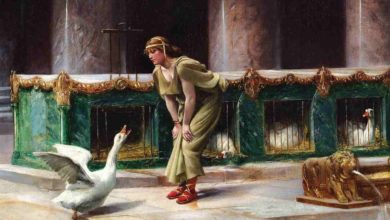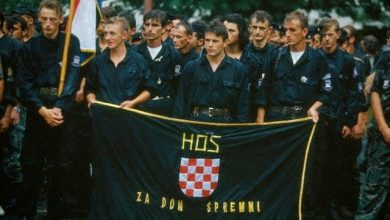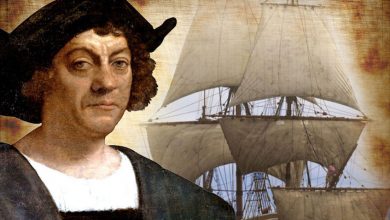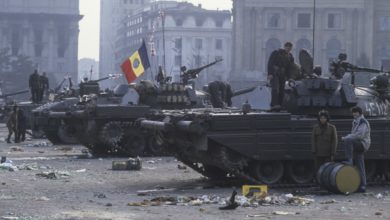The Last Christmas of the Soviet Union

On the 25 December, 1991, Russian statesman Mikhail Gorbachev put his signature on a piece of paper with momentous historical significance, simultaneously validating his resignation and declaring the Soviet Union extinct. The dissolution of the country took effect the following day, in a world forever changed.
In many ways, the stunning rapidity of the collapse seemed bewildering to contemporaries. The Soviet Union was one of the powers that defined the 20th Century. With its astounding economic and military mobilization against the Third Reich, it had claimed a place at the very peak of the international community, second only to the United States. Its phenomenal activism in promoting communism made it a formidable opponent in the Cold War against the West, and particularly the US. It was hard to imagine a world without it, let alone a chain of events that would lead to a dissolution so quickly.
And yet, by the time the West was celebrating Christmas in 1991, public opinion worldwide was confronted precisely with that reality. The story of how this happened remains fascinating to this day, and a profoundly insightful lesson in the fundamental fragility of even the mightiest political entities.
The Era Of Glasnost
When telling the story of the fall of the Soviet Union, it is always problematic to choose where to begin. Many events and choices led to this outcome over decades of internal, diplomatic, and military upheavals, as well as economic successes and failures.
It is certainly impossible to entirely separate the discussion from the ascension of Gorbachev to supreme leadership. This came at a time when Reagan’s administration was outspending Moscow to such a degree that the only two options left to the communist leadership were a de-escalation of the military race or the complete end of any semblance of a civilian economy.

Gorbachev’s choice to liberalise the Soviet Union by allowing freedom of speech and uncensored media coverage of political events would also play a significant factor, especially in the periphery, where the Baltic and Caucasian republics immediately began to pursue a path to full independence.
However, none of these events on their own were final and deterministic. At many points along the road, a different outcome was possible – democratic reforms could be reversed, through politics or violence. A Soviet armed response to prevent secession would have been hard to stop.
More importantly, these events explain how the Soviet Union ceased to be a global power, not how it disintegrated. Even if the USSR gave up its competition with the United States, and allowed some republics to break away, that did not necessarily imply outright dissolution.
The point of no return was reached not with the fall of the Berlin Wall and the loss of the Soviet empire in eastern Europe, but when two former political allies became rivals. It is a story that begins with a referendum on the future of the country.
New Union Treaty, the Only Referendum in USSR History
As Gorbachev had already shown with the fall of the Berlin wall and German reunification, his fundamental belief regarding foreign policy was that the Warsaw Pact should be a coalition of willing partners. He was far less accommodating when it came to secessionism within the USSR. But even then, he was not entirely blind to the fact that the Baltic republics – and with all likelihood the Caucasian republics as well – had their hearts and minds set on independence.
Indeed, during 1990, some republics had already unilaterally declared (although not yet implemented) independence. Additionally, as 1990 came to a close, Moscow was confronted with the sharp deterioration of support for the Communist Party, and communist ideology in general, all over the country.
To answer these issues together, Gorbachev decided to seek public support for his own reforms. This strategy had served him well with the introduction of freedom of speech and other civil rights. In 1989, the Soviet Union had held its first democratic elections, if only limited to choosing candidates from the Communist Party.

However, the quest for public support also entailed risks. In 1990, the first truly competitive elections were held in the USSR, and Gorbachev suffered a severe setback, with the Communist Party losing control of six out of fifteen of the USSR’s constituent republics.
In addition to these losses, a seventh republic, Russia, turned politically against Gorbachev by electing Boris Yeltsin with over 70% of votes. Originally a pupil of Gorbachev, who had inducted him into the Central Committee, Yeltsin had later built his career as an anti-establishment firebrand, leaving the Communist Party and running on a platform of anti-centralism.
At the time when Gorbachev was busily working on the New Union Treaty which he meant to submit to a public referendum, Yeltsin ascended to power in Moscow. He promised to antagonise Soviet control of the constituent republics. The subsequent political rivalry between Russia and the central government of the Soviet Union was to greatly complicate Gorbachev’s plans.
Nevertheless, Gorbachev was undeterred. His plan for the future envisioned a radical reshaping of the Soviet Union as a federation of independent republics, with a common president, military, and foreign policy. This new country may or may not necessarily be communist or market socialist. To win support for this New Union Treaty, he put forward a referendum, containing five separate questions, each dealing with a different issue (the role of the Communist party, whether the new country should maintain or abandon the socialist system, etc). The key question, however, was undoubtedly the first:
Do you consider it necessary to preserve the USSR as a renewed federation of equal sovereign republics, which will be fully ensured of human rights and freedoms of any nationality?
The Baltic and Caucasian republics boycotted the referendum, but across the rest of the country, people rushed in to vote in the very first referendum to be held in Soviet history. With a turnout of 80% and a vote in favour of nearly 70%, Gorbachev’s referendum was, on paper, a complete success.
The New Union Treaty, as it was called, would replace the USSR with the Union of Sovereign States. The treaty was also known as the 9+1 agreement, after its signatories: nine constituent Soviet republics, and the central government. The remaining six republics (the three Baltic states, Moldavia, Georgia, and Armenia) refused to participate in the drafting of the treaty, and were already well on their way to independence in spite of armed opposition and crackdowns by Soviet soldiers.

Over the subsequent months, and with popular approval to spurn them on, the negotiating parties worked on hammering out their differences and producing a complete text. The first complete draft was published in July 1991 and reintroduced the word “Soviet” in the name. The country would thus be known as the Union of Soviet Sovereign Republics, although this didn’t immediately translate to a guarantee that communism would be preserved.
The central government and eight of the nine republics approved the draft. The ninth republic, Ukraine, did not, as it still had reservations it wished to see addressed in an amended draft. The approval of the treaty sent hardliners in the Communist Party into a panic. Fearing that the treaty would encourage smaller republics to seize the initiative and pursue independence, precipitating a potential civil war, the hardliners decided to act. In so doing, they would finally doom the USSR to extinction.
Put Back The Clock: The August Coup Of 1991
The coup was set in motion on the 19 August 1991, with participation from party zealots as well as conservative elements in the military, and senior government members. These included Gorbachev’s vice president, the prime minister, the defense minister, and the leadership of the KGB.
The chosen date was no coincidence: on the following day, 20th August, Russia was scheduled to sign the New Union Treaty. As the largest constituent republic in the Union, Russia’s signature would make the devolution process effectively irreversible, even more so when the republic was headed by Boris Yeltsin. As a supporter of rapid market reform, and with an eye to his own ambition of ruling an independent Russia as its president, Yeltsin was not fond of Gorbachev and the treaty – but he opposed conservative communists even more.

The conspirators sought to prevent the signing of the treaty by securing both Gorbachev and the city of Moscow. The president was holidaying in Crimea at the time and he was put under house arrest, prevented to communicate with the outside world, while the conspirators moved to try and take control of the country.
They were met with significant popular resistance, however, spearheaded by Yeltsin, who delivered speeches in front of the Russian White House while sitting on top of a Red Army tank. The coupists also neglected to jam foreign communications, allowing foreign correspondents to report on and broadcast events; the coup was televised, with many Russians following the events live on CNN. This multiplied resistance to the conspirators.
Within three days, the coup had been frustrated and had largely failed. Gorbachev was reinstated, and the conspirators arrested. For the Soviet Union, however, it was already too late.
The Twilight Of The Soviet Union
The failed coup sealed the fate of the USSR. No constituent republic, no matter its previous openness to a new founding treaty, was willing to risk another coup. If it were to succeed, all republics would once again find themselves tied to a totalitarian dictatorship based in Moscow. The only way to prevent this was to secede, while there was still time to do so.

Between August and December, ten constituent republics declared their independence. Another, Russia, took the view that the USSR no longer existed, and that secession from a non-existent entity was impossible. Together with other republics, like Belarus and Ukraine, Russia took steps to translate this view into reality. Ultimately, it would be the member states themselves to declare the Soviet Union dissolved, with Gorbachev accepting the decision and proceeding to declare his own post extinct.
In the place of the old union, the newly independent republics created the Commonwealth of Independent States, a regional organisation meant to ease the transition to a market economy and enhance cooperation between former members.
The Commonwealth was primarily designed for Central Asian republics, whose governments wished to maintain close ties with Russia. With the Baltic republics decisively steering away from Moscow and towards Europe and the United States, and the Caucasus in an ambivalent position, strong ties in Central Asia seemed to offer stability in a scenario of uncertainty for both Russia and its new partners.
The Commonwealth of Independent States exists to this day, although the rise of the Eurasian Economic Union has in effect superseded many of its competences.
On 25th December, the Soviet flag was lowered for the last time, a Russian flag rising afterward in its place. Commenting on the hectic six months of disintegration that followed the coup, Gorbachev conceded the death of his grand political project, saying that the old system had “collapsed before a new one had the time to start working.”





